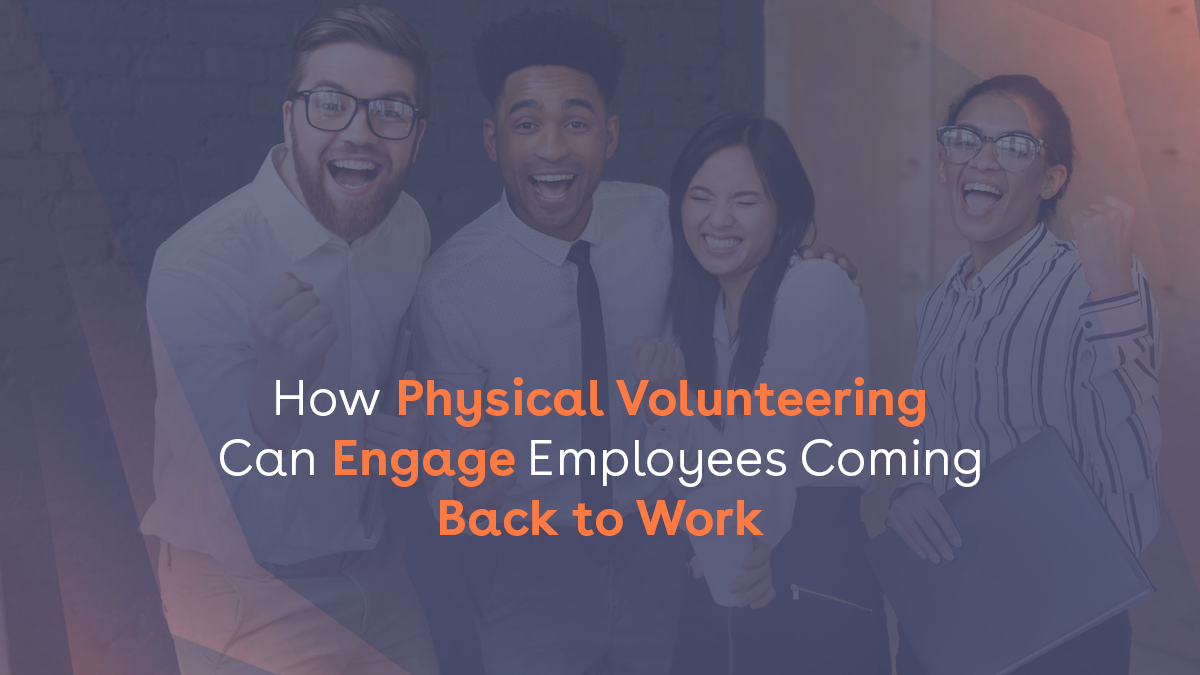Nearly 52.9 million Americans or 1 in 5 adults reported suffering from some form of mental illness with the onset of the COVID-19 pandemic in 2020. This means a lot of employees returning to work aren’t the same ones who were sent home to work remotely. In order to engage these employees, employers must look beyond the occasional social hour, long weekend, or rewards and recognition programs.
Given the fact that lockdowns and social distancing norms are easing and ‘virtual fatigue’ is becoming commonplace, this builds a case for using in-person or at-office volunteering as the cornerstones of employee engagement.
Let’s look at the ways in which an effective physical volunteering program drives employee engagement as employees return to the fold.
Volunteering creates an increased sense of purpos
Volunteering allows for the intersection of people, passion, and purpose. When people volunteer for causes they are truly passionate about, this meaningful exchange can ramp up their sense of purpose.
The emotional benefits let you reap tangible rewards
Volunteering in person is one of the most emotionally rewarding and enriching experiences a person can undertake. This emotional reinforcement is known to relieve tension and reduce stress. Studies have shown that those who had a positive experience of giving back at work were four times more likely to say their teams were willing to give extra to get the job done. This could be the key to driving a more productive, engaged workforce in the “New Normal.”
People skills come to the fore with volunteering
Just like with happy hour after work or the office Christmas party, volunteering is a less rigid social situation that fosters camaraderie. The community aspect of volunteering, especially in-person volunteering aligns people around a common cause. Volunteering can be a great tool to help employees build people skills.
Volunteering can create a new culture in the “New Normal”
A volunteering program can form a critical step in the onboarding of new hires. This is a really important step, as it determines corporate culture surrounding volunteering programs in the long run. A shining example of this practice is FedEx Cares, FedEx’s volunteering and giving program that encourages new employees and interns to do good.
Volunteering helps you attract better talent
With millennials projected to form 75% of the global workforce by 2025 and Gen-Z, an estimated 30% by 2030— higher levels of engagement through doing good could prove to be a crucial factor in their allegiance.
How can Goodera help you put together an actionable physical volunteering plan?
Goodera is in a unique position to facilitate not only meaningful virtual and hybrid volunteering activities but in-person, physical volunteering activities as well. The mix of virtual and physical opportunities allows for greater volunteer engagement, especially with the person-to-person interaction that accompanies physical volunteering
Goodera and its nonprofit partners have created a host of at-office, off-site and nonprofit center-based volunteering activities.
These in-person activities cover several cause areas including D&I for LGBTQIA+, people of color, and people with disabilities, refugee care, animal rights, mental health awareness, and many more.
Given the fact that just 36% of US employees feel engaged at work, organizations looking to bring employees back must first understand that employee engagement is no longer an option but a necessity. In this scenario, physical volunteering, be it in-person or at the office is a critical tool that can transform engagement from a vanity metric to a success metric in the “New Normal” of rising employee and consumer consciousness.
With more than 60% of US workers having spent nearly two years away from their comfort zones at the workplace, they have no doubt built a new comfort zone. Asking them to trade this new comfort zone and return to work comes at the expense of employee morale and engagement. The need of the hour is increased awareness and greater engagement that lets employees feel validated and seen. Hopefully, these measures will mean that the employees who return to work are the same ones who left to work remotely.


